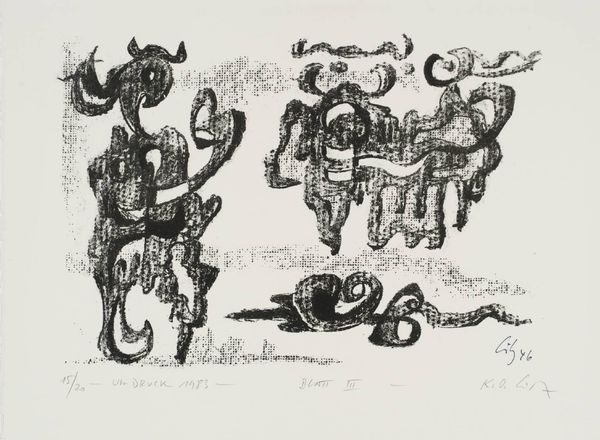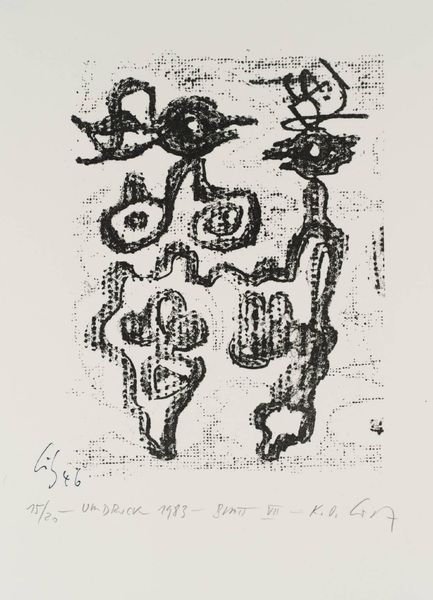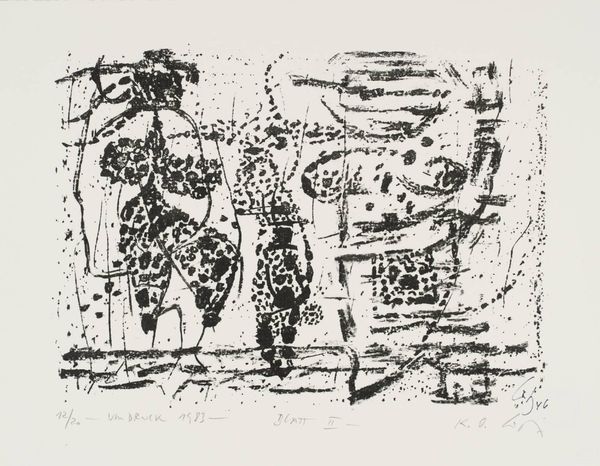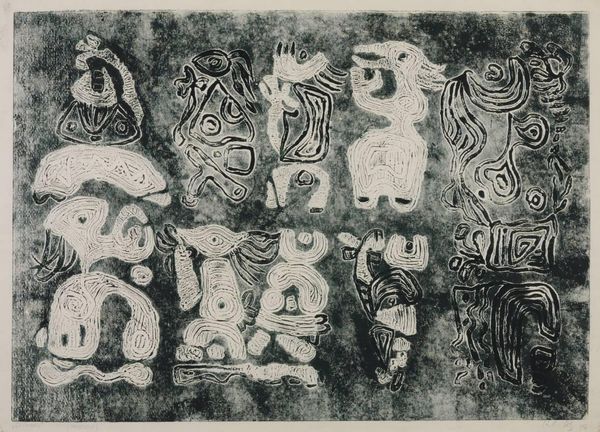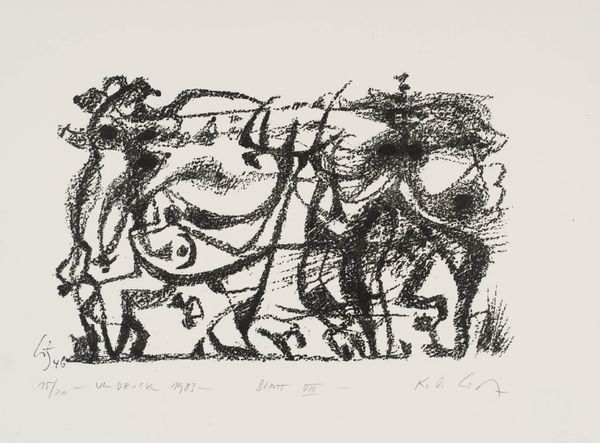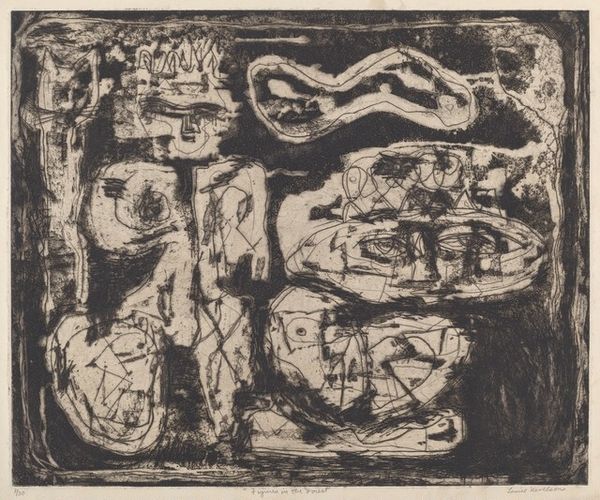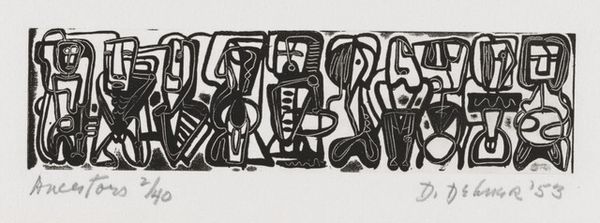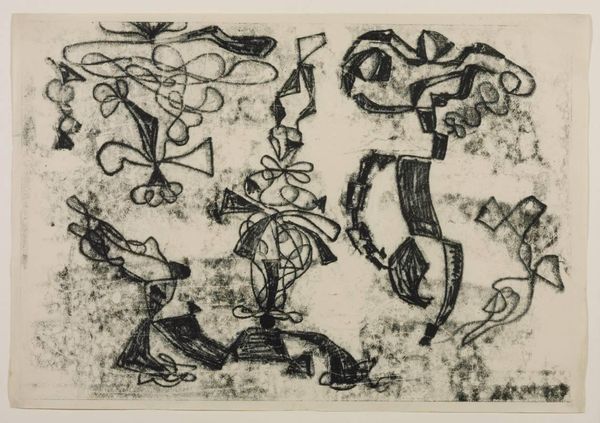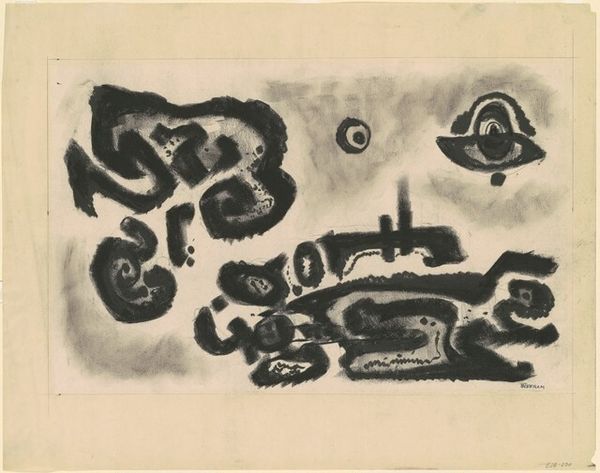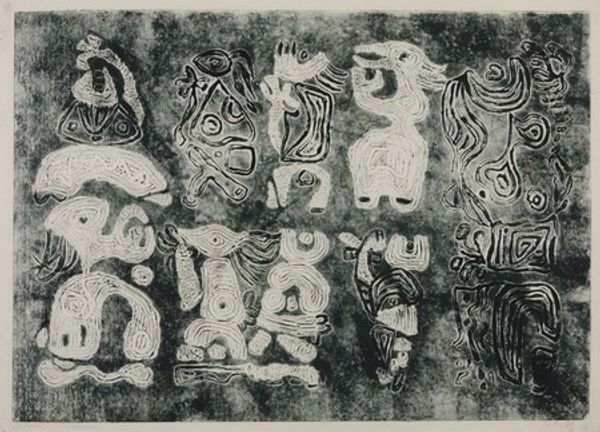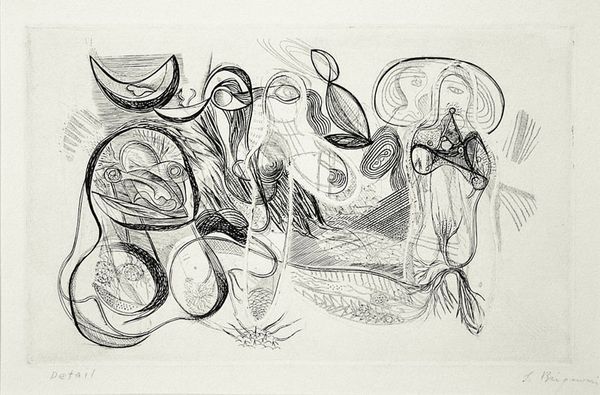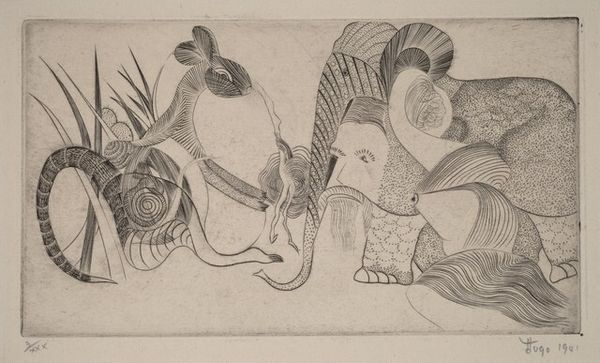![[no title] by Professor Karl-Otto Götz](/_next/image?url=https%3A%2F%2Fd2w8kbdekdi1gv.cloudfront.net%2FeyJidWNrZXQiOiAiYXJ0ZXJhLWltYWdlcy1idWNrZXQiLCAia2V5IjogImFydHdvcmtzLzIwOTUzYzhlLTBlNDYtNDZlZS1hMDBiLTgwY2Y2OGViNjExZS8yMDk1M2M4ZS0wZTQ2LTQ2ZWUtYTAwYi04MGNmNjhlYjYxMWVfZnVsbC5qcGciLCAiZWRpdHMiOiB7InJlc2l6ZSI6IHsid2lkdGgiOiAxOTIwLCAiaGVpZ2h0IjogMTkyMCwgImZpdCI6ICJpbnNpZGUifX19&w=3840&q=75)
Dimensions: image: 210 x 300 mm
Copyright: © Karl-Otto Götz | CC-BY-NC-ND 4.0 DEED, Photo: Tate
Curator: This untitled print by Professor Karl-Otto Götz, created in 1983, immediately strikes me with its bold, almost primal energy. Editor: Indeed. The stark black and white, the roughly hewn shapes, evoke a sense of raw, unfiltered expression. Is there a connection to the Gutai movement here? Curator: Götz was a key figure in German Informel, and influenced the Gutai group's exploration of action painting. This work demonstrates his interest in spontaneous gesture, reflecting the postwar desire for artistic freedom. Editor: The composition, seemingly chaotic at first glance, reveals a careful arrangement of forms. The interplay of positive and negative space creates a visual rhythm. Curator: Absolutely. And understanding its context is essential—post-war Germany, a nation rebuilding, artists seeking new forms of expression to grapple with trauma and uncertainty. Editor: The rawness and lack of overt control point toward a broader societal rejection of established norms. It's fascinating how one sees the artist's own psychological processing externalized through the work. Curator: Precisely. The lack of figuration allows for a direct engagement with the materials and the artist's process. It's a deeply felt statement, even decades later. Editor: I am reminded of Dadaist aesthetics and the importance of pure emotion as a reaction to the social context that birthed it.
